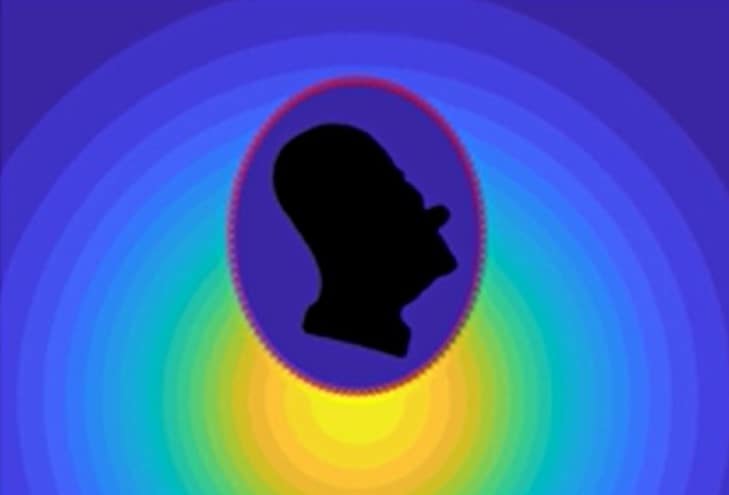
A thermal cloaking technique that can hide warm objects from infrared cameras has been proposed by researchers in France, the US, and the UK. Fernando Guevara Vasquez at the University of Utah and colleagues have calculated that thermal cloaking can be achieved by surrounding objects with rings of tiny heat pumps that absorb and re-emit heat. Although further work is needed to demonstrate the technique in the lab, it could lead to better ways of protecting electrical circuits from heat damage.
Invisibility cloaking of objects has received much attention in recent years. It usually involves using advanced metamaterials to smoothly guide electromagnetic radiation around an opaque object so that the object does not appear to disturb the radiation – thereby rendering the object invisible to an observer.
Now, Guevara Vasquez and colleagues have considered an alternative approach for thermal cloaking that involves actively manipulating infrared radiation in the vicinity of the object to be cloaked. This involves absorbing infrared light using heat sinks and emitting it using thermal sources.
Tiny heat pumps
To do this, the researchers propose using tiny heat pumps based on the Peltier effect to create the sinks and sources. This effect involves passing electrical currents across metal-metal junctions, which can either emit or absorb heat depending on the configuration. In their simulations, they arranged cloaking elements in a ring surrounding the object to be cloaked, with heat sinks and sources paired together.
The sinks absorb the heat produced by an infrared source that illuminates the object from behind from an observer’s perspective. Using mathematical equations of heat flow, the team can calculate how this absorbed infrared radiation would appear on the opposite side of the ring, if the object was not in the way. This calculated radiation is re-emitted by the heat sources on the part of the ring facing the observer, which is a thermal camera.

Heat cloaks hide objects in 3D
In their simulations, this technique could make a uniform flow of heat to appear completely unaffected by objects with complex geometrical shapes – including a profile of the head of cartoon character Homer Simpson (see figure). The team also used the tuneability of Peltier elements to go beyond thermal cloaking. Using their mathematical model, they were able to make one object look like a completely different object to the thermal camera.
One drawback of the proposed cloaking system is that the temperature of the illuminating source must be known ahead of time, so further research is needed before a practical device can be built. Peltier elements are already widely available commercially, so the technology required is well within reach.
If thermal cloaking is realized, it could enable engineers to hide the heat-emitting parts of circuits such as power supplies, preventing them from interfering with heat-sensitive components such as thermal cameras. The technique could also be used in industrial processes to control the temperatures of materials.
The research is described in the Proceedings of the Royal Society A.
